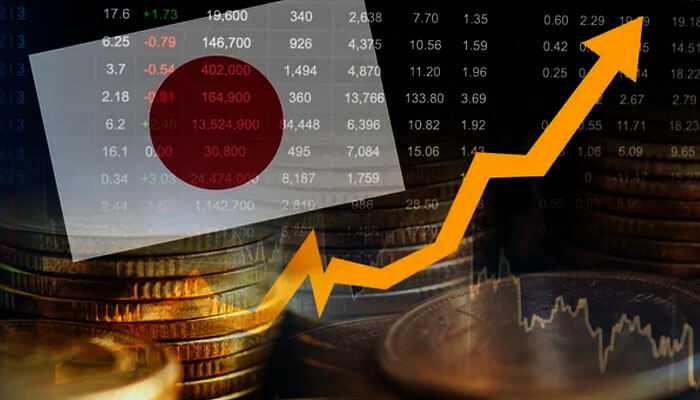Introduction:
Japan, which has won global recognition for its great financial stability and continuous innovation, recently made significant changes to its financial strategy, which represents a good departure from almost a long period of balance. The historical decision to increase interest rate hike stands out as a huge insurance pass, indicating damage to the pre-2000s economic status and highlighting an important turning point in Japan’s economic history. A complete understanding of the results emerges as we observe the reasons behind this historic selection, examine its implications within Japan’s complicated economic landscape, and check out any possible impacts across global markets. We also get a glimpse of the long-term results of this preference.
The Background:
For the long term, Japan has faced sustained financial difficulties due to elements such as financial traits, an aging population, and unimpressive growth possibilities. This conflict started in the early 1990s with the asset marketplace collapse in Japan, which despatched the United States into an extended period of economic instability referred to as the “Lost Decade.” The results of ongoing attempts to stimulate the financial system using a combination of economic and financial methods have been combined, leading the Bank of Japan (BOJ) to hire unconventional techniques that include financial assistance in its struggle against inflation pressures.
Its economic surroundings have been characterized using the complex interactions among those factors, which have additionally motivated coverage decisions and added to the tough balance of reform and balance in Japan’s non-stop pursuit of sustainable growth.
The Decision to Raise Interest Rates:
The selection to raise interest rates by the Bank of Japan in this case is a smart trade in policy, and there are valid reasons for this selection. The government deliberately shifts from an extremely unfastened economic policy strategy to address persistent inflationary abilities in this correction. Additionally, because inflation is beginning to expose early indications of recovery and the financial sector is progressively recovering from the pandemic’s effects, the BOJ’s policymakers have determined it is sensible to regulate financial policy. This recalibration is critical for correcting underlying economic imbalances over time and reducing overheating risks.
Rationale Behind the Hike:
A wide variety of essential elements have stimulated the BOJ’s selection to increase interest rates. First off, no matter international hardships, Japan’s financial gadget has proven extraordinary resilience, as shown with the aid of the healing in GDP increase and the recuperation of pre-pandemic jobless quotes. Furthermore, rising interest fees and enhancing home demand are the important drivers of inflation, as long as it remains mild. As a result, the BOJ now sees the normalization of interest fees as essential.
The vital financial institution hopes to promote charge balance, aid long-term financial stability, and guide sustainable financial growth by means of implementing this motion. This calculated pass demonstrates the BOJ’s proactive technique for handling the changing economic environment and its determination to maintain the country’s financial balance.
Impact on Consumers and Businesses:
The recent choice to elevate interest rates will undoubtedly have extensive-ranging implications, touching various sectors of the economy. Consumers, companies, and financial markets alike will all experience the impact of this circulate. Increased interest charges benefit investors by allowing them to anticipate better returns on their assets and savings, which boosts household income.
On the other hand, borrowers may find themselves struggling with increased borrowing costs, particularly property owners and agencies. This capacity rise in economic burden ought to doubtless cause a decrease in both consumption and investment. Despite these difficulties, it’s important to remember that the gradual path of the rate increases combined with the overall stability of Japan’s financial system is anticipated to help minimize any negative effects on households and businesses in the long run.
Global Market Response:
The most recent announcement of Japan’s decision to increase interest rates sent shockwaves through the interconnected global financial markets, causing traders all around the world to respond.
Some viewed this ambitious circulation as a promising sign of Japan’s financial renaissance and a brilliant example of the power of strategic economic interventions. In contrast, a portion of the investing community expressed legitimate concerns about the potential impact on the overall worldwide financial situation and the prevalent tone of risk avoidance.
As trends in Japan’s economic conditions keep unfolding, market participants stand vigilantly prepared to assess the responses of other central banks to the ever-evolving dynamics of the worldwide economic arena, navigating through a complicated net of interconnected elements that shape the future trajectory of the international economic landscape.
Challenges Ahead:
Despite the tremendous momentum generated by the interest rate hike, Japan nonetheless faces numerous demanding situations on the street to sustain financial recovery. Notably, structural problems, which include an older population, labor market rigidities, and high public debt degrees, function as outstanding limitations that avoid Japan’s capability to gain robust and lasting growth. These demanding situations highlight the urgent need for policymakers to take decisive action and put into effect comprehensive structural reforms.
Such reforms need to focus on enhancing productivity through investments in technology and infrastructure, selling innovation by fostering collaboration between government, academia, and enterprise, and ensuring inclusive growth by addressing earnings inequality and possibilities for all segments of society. These coordinated efforts are essential to not only stabilize Japan’s
competitiveness in the global economy but also to pave the way for a more solid and prosperous destiny for its citizens.
Conclusion:
Japan’s historic decision to implement its first interest rate hike in almost two decades symbolizes a critical turning point in the country’s complex economic history. This step, taken with confidence in Japan’s monetary system’s strength, also highlights the challenging conditions and opportunities anticipated in the coming days.
Striking a completely calculated balance between managing inflationary pressures and improving financial growth, Japan is navigating the multifaceted dynamics of an ever-changing global landscape, all in the pursuit of laying the groundwork for a future that is not only prosperous but also sustainable. As the world’s eyes focus on Japan’s unfolding economic transformation, the lessons gained and strategies employed during this period are poised to resonate through the corridors of financial policy, potentially altering the path of global economics in the coming years.



